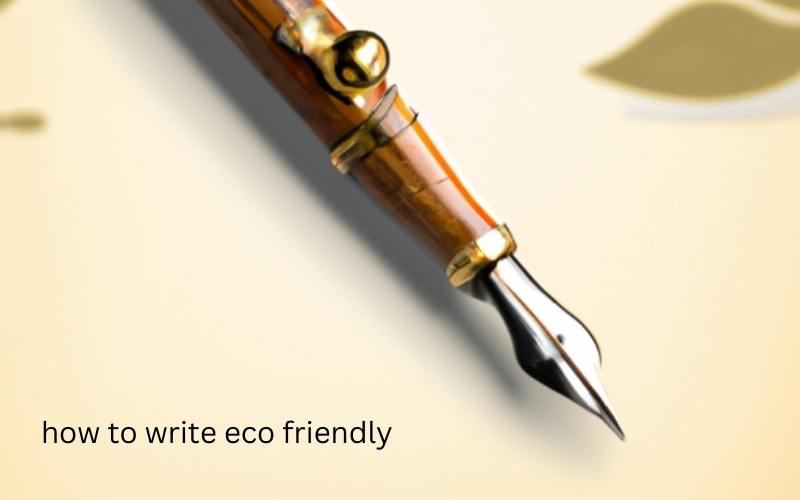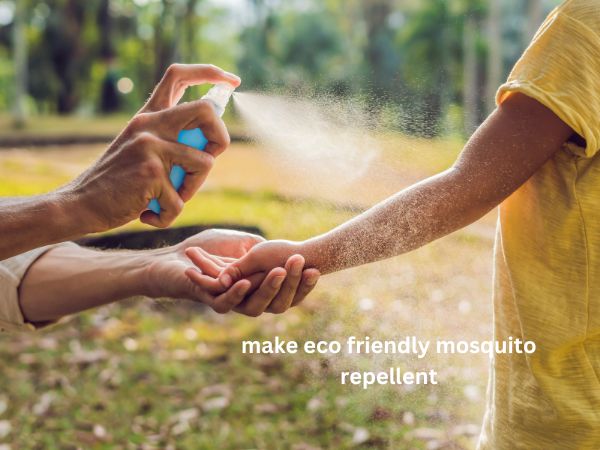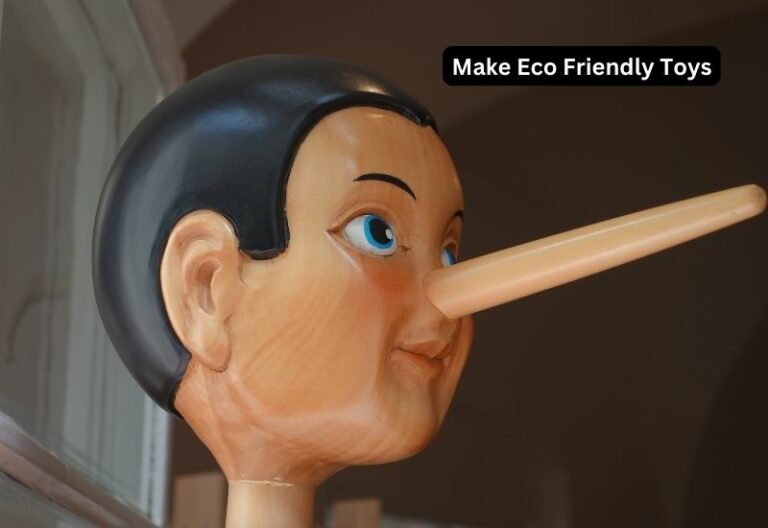how to write eco friendly?
Today we discuss how to write eco-friendly. You love the planet. You want to do everything you can to protect it. And you know that one of the best ways to do that is to spread the word about why eco-friendly living is so important. The good news is, there are a lot of ways to eco-friendly ways to live and one of them is to write eco-friendly.
3 eco-friendly basic writing tools:
- eco-friendly pencils
- eco-friendly paper
- eco-friendly pen
1. eco friendly pencils:
Eco-friendly pencils are made of natural materials like wood and graphite, rather than plastic. They’re also often produced using sustainable methods, such as renewable energy or recycled materials.
Most eco-friendly pencils are also biodegradable, meaning they can break down and disappear in the environment over time. This is a big plus for the environment, as traditional plastic pencils can take hundreds of years to decompose.
There are ways to reduce the environmental impact of pencils. For example, you can buy wooden pencils instead of plastic or metal ones. You can also choose pencils that are made from recycled materials. And finally, you can reduce your use of pencils by taking advantage of alternatives like pen and paper or electronic note-taking tools.
eco-friendly pencils with seeds:
Eco-friendly pencils with seeds are made by taking a regular wooden pencil and replacing the lead with a small seed capsule. When the pencil is sharpened, the small seeds inside the capsule are released and can be planted in soil.
The goal of these eco-friendly pencils is to help teach children about conservation and environmentalism. Each time the child uses the pencil, they are reminded that they need to take care of the environment and replant trees. The company that makes these eco-friendly pencils also encourages parents to plant trees in honor of their children’s birthdays.
eco-friendly pencil case:
An eco-friendly pencil case is made of biodegradable materials that can decompose in a landfill. The most common material used to make pencil cases is polypropylene, a type of plastic.
The best way to make sure your pencil case is eco-friendly is to look for the recycle symbol on the product. This symbol means that the product was made from recycled materials.
If there’s no recycle symbol, ask the manufacturer where the product was made and how it was manufactured. Many factories in China and other countries still use harmful chemicals and processes to make products, so it’s important to be aware of these dangers before buying any products from these places.
mechanical pencils vs wooden pencils:
Mechanical pencils are better than wooden pencils because they don’t need to be sharpened and the lead is always consistent.
Wooden pencils require manual sharpening, so the lead can become blunt over time. This can cause a person to have to press harder on the paper in order to get the desired line thickness, which can lead to hand fatigue. Additionally, the lead in wooden pencils can vary in width depending on how recently it has been sharpened.
Mechanical pencils, on the other hand, have a lead that is always consistent in width because it is not exposed to air. They also don’t require manual sharpening, so they are hassle-free.
eco-friendly school supplies:
Eco-friendly school supplies come from natural and composite materials that won’t harm the environment. For example, bamboo pencils are made from a sustainable plant material and cork notebooks are made from the bark of a cork oak tree that is harvested without damaging the tree.
Other eco-friendly school supplies include recycled paper products, such as notebooks and binders, and pens made from biodegradable materials like corn or bamboo. In addition, there are now “green” or environmentally friendly glue sticks, crayons, markers, and scissors that don’t contain toxic chemicals.
The movement towards eco-friendly school supplies has grown in recent years due to increased awareness of the importance of sustainability and protecting our planet.
eco-friendly stationery brands:
There are a number of great eco-friendly stationery brands around the world that focus on sustainability and using recycled materials. Here are a few of our favorites:
Wildlife Works is a UK-based brand that makes notebooks, journals, and cards from 100% recycled paper. Their products are also Forest Stewardship Council (FSC) certified, meaning the paper is made from sustainable forests.
JB Welly is a Canadian company that makes notebooks and journals from 100% post-consumer waste paper. That means the paper has been recycled from old magazines, newspapers, office paper, etc. JB Welly also uses vegetable inks and water-based glues in their products.
Seniman Calligraphy is a Malaysian brand that makes beautiful notebooks, journals, and cards from recycled paper. Their products are also handmade using traditional techniques, which adds an extra special touch.
2. eco-friendly pen:
Eco-friendly pens are pens made out of sustainable materials that don’t harm the environment. They can be made from recycled plastic, bamboo, or other sustainable materials.
Most eco-friendly pens are also biodegradable, meaning they decompose naturally in the environment. This is better for the planet than traditional pens, which are often made of non-biodegradable materials like plastic and metal.
There are a few different types of eco-friendly pens on the market today. Some are refillable, while others use replaceable ink cartridges. Some even use solar power to recharge their batteries!
eco-friendly fountain pen ink:
There are a few types of eco-friendly fountain pen inks. One is made from natural dyes that come from plants, such as acacia and logwood. These inks are generally available only in very limited colors.
Another type of eco-friendly ink is made from recycled plastics. This type of ink is available in a wide range of colors, and it has the advantage of being waterproof. However, because it’s made from recycled plastics, it can be less stable than other types of ink, and it may clog your pen more quickly.
The next type of eco-friendly fountain pen ink is made from biodegradable materials. This type of ink is also available in a wide variety of colors, and it’s very stable. However, because it’s made from biodegradable materials, it may not be as long-lasting as other types of ink.
Ultimately, there are also eco-friendly inks that are made from vegetable oils. These inks are usually available in only a few colors, but they’re very stable.
3. eco-friendly paper:
Eco-friendly paper is made from renewable resources, such as bamboo, sugarcane, or eucalyptus. The fibers are ground into a pulp and then formed into sheets of paper.
The process of making eco-friendly paper is much more environmentally friendly than making traditional paper. For example, the use of chlorine in the bleaching process is eliminated, and fewer harmful chemicals are used in the production process. In addition, the use of recycled materials decreases the amount of waste that ends up in landfills.
eco-friendly paper manufacturers:
One manufacturer of eco-friendly paper that comes to mind is G. F. Smith, which has a mill in the UK that uses 100% renewable energy. They also use a lot of recycled materials in their papermaking process, and have won awards for their efforts to be environmentally responsible.
Another good option is Mohawk Fine Papers, which has a number of mills across North America that are powered by sustainable sources of energy, such as hydroelectricity and wind power. They also use a high percentage of post-consumer recycled content in their papers and are certified by the Forest Stewardship Council.
how to write eco friendly?
There are a few ways to make your writing more eco-friendly. One way is to use recycled paper products. Another way is to use biodegradable pens or pencils. You can also plant trees as a form of carbon offsetting for the emissions caused by your writing.
If you’re looking for specific eco-friendly writing tools, there are a few great options out there. The Bamboo Eco Write pen is made of bamboo and cornstarch, and it biodegrades within 60 days after being thrown away. The BIC Cristal For Her ballpoint pen is made with recycled plastic, and it’s also recyclable.
Frequently Asked Questions (Faqs):
Answer:
Ink is not bad for the environment. In fact, ink is a non-toxic, water-based product. The primary ingredients in ink are usually made of vegetable oil derivatives, water, and alcohol.
Answer:
Yes, pencils can be bad for the environment. The main environmental concern with pencils is the lead in the graphite. Lead is toxic and can contaminate soil and water supplies. In addition, manufacturing pencils requires a lot of energy and results in the release of pollutants like sulfur dioxide and carbon monoxide.
There are some ways to recycle paper without a screen or blender. One way is to use a shredder to cut the paper into small pieces. Another way is to use a hammer and chisel to break down the larger pieces into smaller pieces.
Answer:
The biodegradable material used in school supplies is usually made of cornstarch. It is not harmful, and it will decompose over time.

final words:
You can make a difference by making your writing more eco friendly. It doesn’t take much to get started, and you’ll be surprised at how easy it is to make a few simple changes that will have a big impact on the environment. So what are you waiting for? Get started today and see how quickly you can start making a difference.

